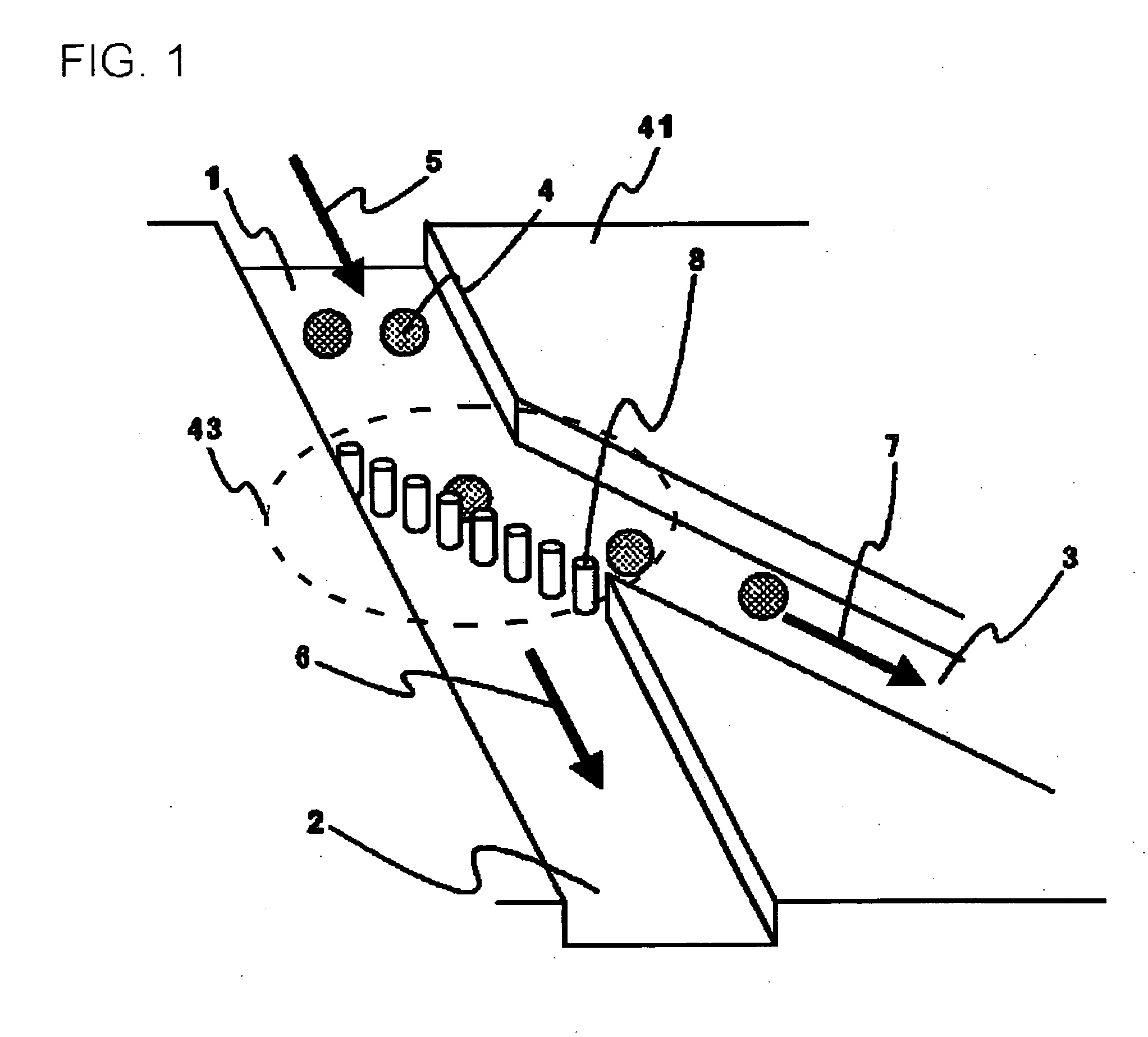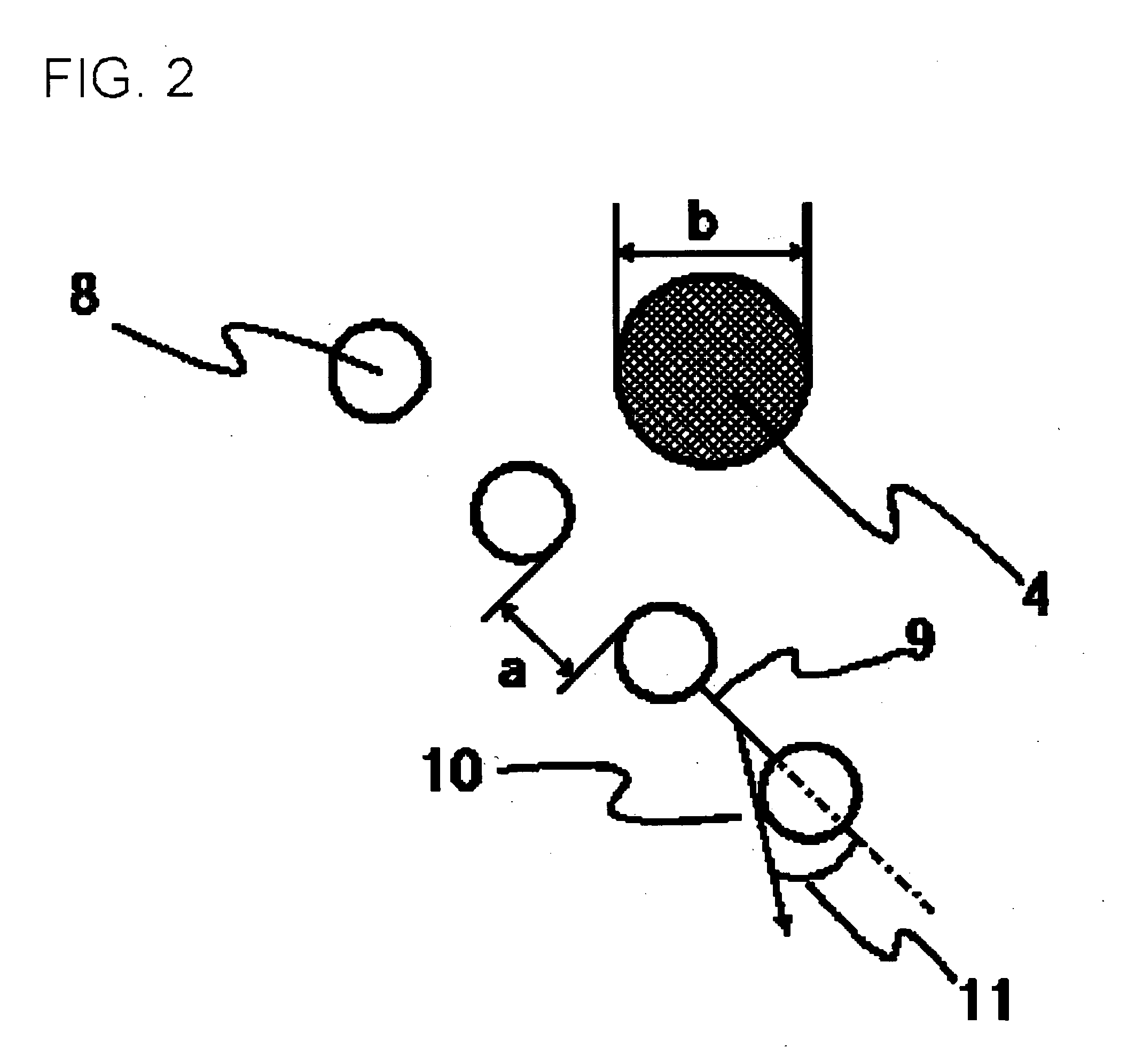Fine particle handling unit, chip and sensor mounted with same, and methods for separating, capturing and sensing protein
a technology of a detection device and a processing unit, which is applied in the field of fine particle processing units, can solve the problems of extremely small treatment capacity of the particle treatment apparatus using the micro-channel, and the difficulty of adopting the device to fine particles of molecular level,
- Summary
- Abstract
- Description
- Claims
- Application Information
AI Technical Summary
Benefits of technology
Problems solved by technology
Method used
Image
Examples
first embodiment
[0072] This embodiment relates to a particle manipulation unit manipulating flow of particles contained in a sample liquid, and guiding them to predetermined directions, with the aid of obstacles formed in a channel. FIG. 1 is a perspective view showing an exemplary configuration of a particle manipulation unit of this embodiment. As shown in FIG. 1, the configuration is such that a channel 1 formed on a substrate 41 is branched into a channel 2 and a channel 3 at a branching point 43, and that an obstacle portion, in which a plurality of columnar obstacles 8 are arranged as being spaced by regular gaps, is disposed at the branching point of the channel 1, channel 2 and channel 3.
[0073] First, a suspension containing the particles 4 is filled on the upstream side of the channel 1. Size of the particles 4 may typically be of the order of millimeter or smaller. It may still further be of the order of micrometer or smaller. The suspension respectively flows in the direction indicated ...
second embodiment
[0099] This embodiment relates to a particle manipulation unit manipulating flow of particles contained in a sample liquid, and guiding them to predetermined directions, with the aid of obstacles formed in a channel. This embodiment differs from the first embodiment in having a region in which multiple stages of obstacle portions are formed. FIG. 3 is a perspective view showing an exemplary configuration of a particle manipulation unit of this embodiment.
[0100]FIG. 4 is a top view showing the obstacles 8 disposed at the branching point 43, and particles present in the upstream side of the branching point 43. Next paragraphs will describe a mechanism of manipulating direction of flow of the particles 4 by the obstacle. As shown in FIG. 4, the structure of arrangement of multiple stage of obstacles 8 has a unit cell 12 indicated by a dashed line formed therein. As for width of gaps in the unit cell 12, as shown in FIG. 4, width “a” of the gap is set smaller, and width “c” of the gap ...
third embodiment
[0106] This embodiment relates to a unit manipulating the particle flow, having an array structure of the obstacles configured by unit cells, each of which having a trench structure formed on the wall surface of the channel, capable of interacting with particles of a predetermined size. FIG. 5 is a perspective view showing an exemplary particle manipulation unit of this embodiment. As shown in FIG. 5, a channel 14 is formed on a substrate 47. The sample liquid, having particles 15 suspended therein, is filled on the upstream side of the channel 14. The particles 15 flow in the direction indicated by an arrow 16 in FIG. 5. Similarly to the first embodiment, force making the particles 15 flow in the direction of arrow 16 may be generated by a method such as electrophoresis, dielectrophoresis or the like, or by any other forces exerted on the particles 15.
[0107] As shown FIG. 5, the channel 14 has an array structure, in which a trench structure 17 configures a unit cell, formed on the...
PUM
| Property | Measurement | Unit |
|---|---|---|
| particle size | aaaaa | aaaaa |
| angle | aaaaa | aaaaa |
| angle | aaaaa | aaaaa |
Abstract
Description
Claims
Application Information
 Login to View More
Login to View More - R&D
- Intellectual Property
- Life Sciences
- Materials
- Tech Scout
- Unparalleled Data Quality
- Higher Quality Content
- 60% Fewer Hallucinations
Browse by: Latest US Patents, China's latest patents, Technical Efficacy Thesaurus, Application Domain, Technology Topic, Popular Technical Reports.
© 2025 PatSnap. All rights reserved.Legal|Privacy policy|Modern Slavery Act Transparency Statement|Sitemap|About US| Contact US: help@patsnap.com



